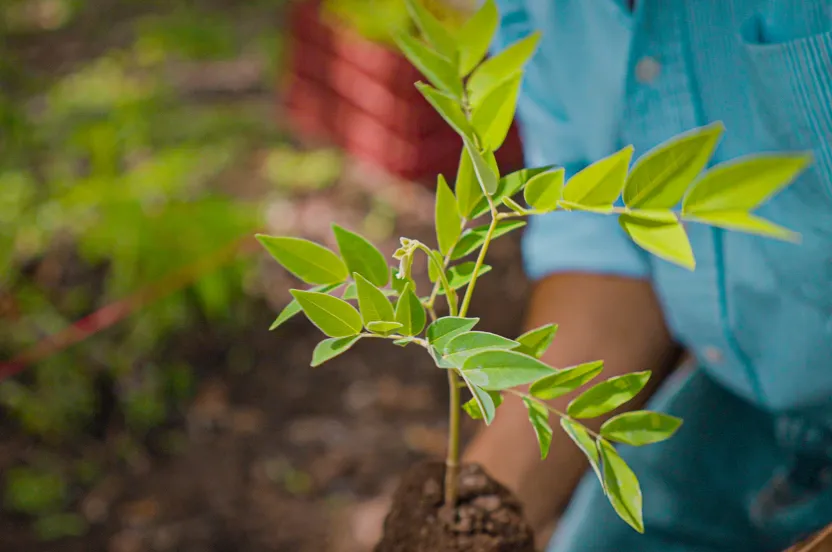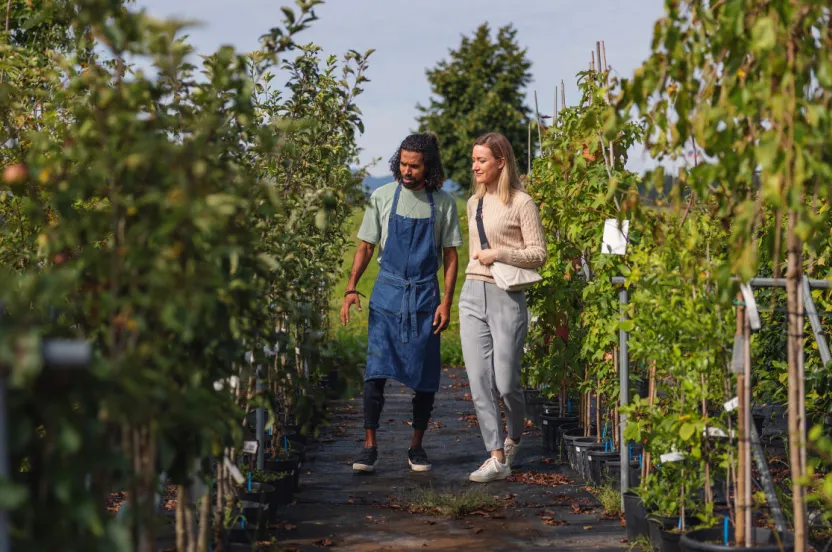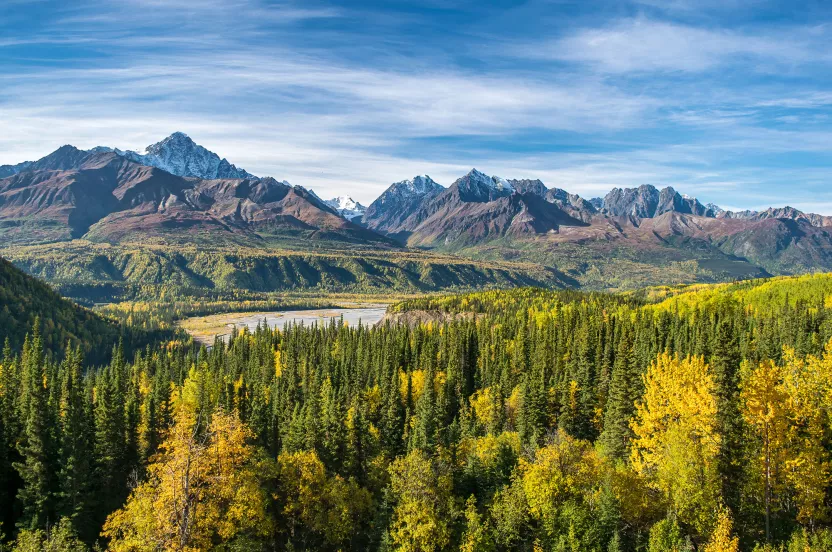The Arbor Day Foundation is pledging 10 million trees to areas impacted by hurricanes Helene, Milton Help us replant
Protecting the Forest, Honoring Tradition
One man’s mission to plant trees and revive a centuries-old philosophy in the Andes Mountains.
February 9, 2023
Constantino (Tino) Aucca is a trailblazer in the restoration efforts of South America’s rare and wonderful Polylepis forests.
And as the President and co-founder of Acción Andina, he is a trusted tree planting partner of the Arbor Day Foundation.
Tino is also a 2022 recipient of the UN Environment Programme’s Champions of the Earth award. This annual award recognizes individuals who are “taking bold action for our world.”
His recognition came as no surprise to those who work with him. Tino is the type of leader who inspires through action. He knows what it takes to reforest one of the most fragile and critical ecosystems in the world — a passion for the planet, deep respect for local heritage and culture, and a willingness to do the hard work.
The Arbor Day Foundation is excited to celebrate Tino’s recognition as well as the legacy he is building. We got in touch with him to hear more about the motivation behind his work as well as his passion for forests and the people who care for them.
Congratulations on this well-deserved recognition, Tino. Tell us how you developed a personal connection to the forest.
I come from an indigenous family (Quechua-Inca), where in my early years, I took care of the cattle of my grandparents at their farm 35km from Cusco. From the beginning, they taught me the importance of the forest and the environment. Later when I was studying at the University, most of my weekends and holidays, I spent sleeping in the mountains with forests and lakes, enjoying nature and its creatures.
In 1989 when I was the field assistant of Dr. Jon Fjeldså (Director of the Zoology Department of the Copenhagen Museum), we traveled to the highlands of Ayacucho and Apurimac (south-center of Peru), searching for Polylepis forests. This was during the hard time (emergency) in a Guerrilla fighter area. We survived the dangers, and Jon was able to finish his famous book “Birds of the High Andes.” That trip is when I understood from Jon that I must commit myself to protecting Polylepis forests. At that time, I was dreaming of earning a master’s degree and Ph.D. But Jon told me that for the world, protecting the Polylepis will be the best thing that I can do. All the social and cultural heritage that I received from my parents and grandparents and my understanding of the urgent needs of indigenous communities like mine pushed me to take on this responsibility. But for the first 10 years, it was hard because no one, except Jon, understood this as a great objective or thought it was possible to make even a modest living doing this.
There is a lot of rich culture and history in this area. How do you honor that heritage throughout your tree planting efforts?
Descending from an Incan culture and spending all my earlier age with all those local groups, I received from them all the histories of our people. What lessons did I learn? First, we need to have RESPECT for all those communities. Those from the big cities are not superior. Second: TALK. We must learn at least a few words from the people in their language if we want to have more trust and better understanding. Stereotypes from the big cities and modern families are hurtful. Third, LISTEN. Those groups have a lot to tell us and teach us. They want to share their true history. But if people come with egos and think they have the magic formula and city solutions for everything, that is the absolute wrong position. And fourth, LEARN: The people have a lot of knowledge. And it is amazing how we can use a simple way to resolve many of our problems. I practice these approaches. Reading a lot of history, exploring, and reviving knowledge of ancient practices permit me to think on a bigger scale to plant millions of trees.
But restoration is not just the planting of the trees at Acción Andina and Global Forest Generation. Our activities start with the collection of cuttings and seeds. Between 8-10 months of continuous production occurs in the nurseries before the final planting activity, which will involve everyone in the communities, from the very young to the very old. Complementary activities reflecting the needs of a real restoration program include control of fires, fences to protect the restoration and the remaining old forest, monitoring, conservation benefits for the local families, environment education, etc. The restoration program benefits the entire community, uniting them, organizing them, as everyone works together with equity.

Constantino and his mentor, Dr. Jon Fjeldså | Photo credit: Global Forest Generation (left photo) & ECOAN (right photo)
Tell us more about the Incan principles of “Ayni and Minka” and how they inspire your work.
When the Incas decided to go for a huge commitment to make huge plans a reality, they knew they needed a huge number of people. They came up with a winning formula, Ayni and Minka. Ayni in the Quechua language means today for me and tomorrow for you. Minka means let’s work all together for a common goal.
To plant millions of trees in an efficient way is not just thinking about salaries. If the program will be paying huge, numerous salaries for a restoration campaign, this will not be sustainable. How, then, can we engage the people to work all together for a common goal? Easy. Use the practice of the Ayni and Minka. This worked wonderfully thousands of years ago, and today it is again working perfectly where ECOAN and Acción Andina have revived it, reminding the people of their history and encouraging pride in their ancient heritage.
What have community members told you about how deforestation of the mountain forests affects them?
When I began this project in 2000, we used a flagship tree species to convince our donors and the local and native communities of its value. More than 10 years later, journalists asked the people: “Why are you doing this?” And the answer was always the same: “We are doing this for the water.” I immediately said: “Wait, wait, wait, supposedly we have been doing this for the birds, other animals, forest, and mountains. Now you are saying that it is for the water? How is this?” And they answer: “Dearest Father Tino, WATER for us is life, economy, and the future of our children. For that reason, all this effort is for water. Sorry for that.” Me, I said: “No worries. Thanks for this magnificent answer because this is superior to a master’s or Ph.D. lesson. This for me is the perfect Climate Change lesson.” From that time, my conservation nonprofit ECOAN changed our mission, concentrating on water, landscapes, mountains, and biodiversity and culture. As I tell you, it is a learning process always.
What is the largest challenge you face as you plant in the Andes Mountains, and how do you meet that challenge head-on?
The largest challenge for me and my projects was first, to earn the trust of the local and native communities and second, to maintain the stability and sustainability of the communities and the program. For the trust, we are working many years with the people. We never abandoned them, even during the COVID times, and that created total trust and loyalty. For sustainability, we always are working hard. But sometimes politics, weather, and global priorities hurt us. If we can’t be sure about the amount of funds to continue scaling, then we cannot promise what we may not achieve. Just with words, people cannot survive.
When did you begin working with the Arbor Day Foundation, and how has this partnership helped your organization fulfill its goals?
Acción Andina and Global Forest Generation first partnered with the Arbor Day Foundation in 2020. The Arbor Day Foundation gives us more opportunities to consolidate our community forest restoration program. With the help of this Foundation as an ally, our shared dream is becoming a reality.

Photo Credit: ECOAN
You spend much of your time out working in the planting areas. Why do you find it important to be onsite, physically putting trees in the ground?
Leaders must be role models, working with the people, providing inspiration along with action. Of course, everyone wants to see the Father, Apu, Curaca, Jefe, etc., working on real action on the ground. The energy passes between the leader and the people and back again. They feel happy seeing active, involved leaders. This energy and hope is so powerful for all of us, strengthening everyone’s commitment.
The people in the past had many bad experiences with “leaders” who arrived just for the photo opportunity, saying some nice words, but never mixing with the local people, never being one of the people. That is not my way.
What is the legacy your organization is hoping to leave for the Andes Mountains?
We hope our legacy will be lasting protection and regeneration of the forests of the Andes. Of Pachamama, Mother Earth. We want to prove that local people can do big actions that leave millions of trees growing for the benefit of all the world’s future generations.
What does receiving the UN Champions of the Earth award mean to you?
It means more opportunity to speak without fear, to speak the truth, to stand up in front of all the super experts who want to maintain their egos and comfort and status quo and to tell them what the local and native communities need. And what the planet needs.
I am learning that people are happy knowing that there will be a person (me) who can speak clearly and transparently and with conviction about conservation, local and native communities, water, culture, etc. I am pleased that I can carry the message of Ayni and Minka — the ancient Inca principles of working together for the common good — to global audiences. This is not just an ancient message. It is a timeless and urgent message for everyone everywhere if nature and people are to survive.
Tino is a strong leader and an amazing partner for the Arbor Day Foundation — truly embodying the spirit of the Champions of the Earth award. And his organization is an important part of the Foundation’s global network of tree planting partners that have the much-needed local knowledge and expertise to ensure the right trees are planted in the right places for the right reasons.




